What data recovery tools to buy if you want to start a data recovery business?
Free video data recovery training on how to recover lost data from different hard drives?
Where to buy head and platter replacement tools at good prices?
Data recover case studies step by step guide
I want to attend professional data recovery training courses
 Note: All information is for reference only! If you found something not correct, please make comments and correct! We hope everybody can take advantage of this salon and improve!
Note: All information is for reference only! If you found something not correct, please make comments and correct! We hope everybody can take advantage of this salon and improve!
Now, let’s talk about something about Bad sector repair.
Tips: As soon as you see any bad sectors show up on a disk that contains data, make sure you back up the disk immediately, or you risk possible loss of your data. I would avoid making any significant changes to the software setup on the drive, or adding any new data to it, until you get the situation resolved.
Have an overview of bad sectors?
A bad sector is a sector on a computer’s disk drive or flash memory that cannot be used due to permanent damage, such as physical damage to the disk surface or failed flash memory transistors. It is usually detected by a disk utility software such as CHKDSK or SCANDISK on Microsoft systems, or badblocks on Unix-like systems. When found, these programs mark the sectors unusable (all file systems contain provision for bad-sector marks) and the operating system skips them in the future.
A modern hard drive comes with many spare sectors. When a sector is found to be bad by the firmware of a disk controller, the disk controller remaps the logical sector to a different physical sector. In the normal operation of a hard drive, the detection and remapping of bad sectors should take place in a manner transparent to the rest of the system. There are two types of remapping by disk hardware; P-LIST (Mapping during factory production tests) and G-LIST (Mapping during consumer usage by disk microcode). When the operating system begins to detect bad sectors, in most cases, it means that the surface of the hard disk is failing and the drive has run out of spare sectors with which to remap the failed sector. There are a variety of utilities that can read the SMART information to tell how many sectors have been reallocated, and how many spare sectors the drive may still have.
Typically, automatic remapping of sectors only happens when a sector is written to. The logic behind this is presumably that even if a sector cannot be read normally, it may still be readable with data recovery methods. However, if a drive knows that a sector is bad and the drive’s controller receives a command to write over it, it will not reuse that sector and instead remap it to one of its spare-sector regions.This may be the reason why hard disks continue to have sector errors (mostly disk controller timeouts) until all the bad sectors are remapped: typically with an entire-drive zeroing of sectors.
While running your computer, you may receive error messages suggesting your hard disk might contain bad sectors. The errors are typically flagged as “CRC” or “Cyclic Redundancy Error“. Some of your data files are missing, unreadable or corrupted and it takes forever or impossible to access certain files and folders. This may be a cause of bad sector problems. Sectors are pie-sliced divisions of a hard disk. And a bad sector is a sector on the disk which data cannot be written or read due to a physical damage or inconsistencies of parity checking bits on disk. Any data that is written or stored on that area is likely to be lost or corrupted. Data residing on the rest of the disk may be unaffected and the disk is considerably usable if the bad sectors are few.
Bad sectors are mainly due to the magnetic weakening of the domain and mechanical faults. Over time, the magnetic areas of a disk lose its magnetism and hence its inability to retain data. Such bad sectors have the tendency to spread and are usually non-repairable. Mechanical faults include physical shocks to the disk, abrupt power shutdowns and disruptions during read-write operations. Head crash can also cause bad sectors and lead to permanent data loss on the disk. When bad sectors spread, it can result in system instability when important system files are destroyed. Mild corrupted data however can be corrected by most file system utilities.
Unknown to most, the bad sectors could some times be due to bad parity checking bits written on disk. Most modern disk while storing data will transparently store parity bits together with the data. When the data is read, the parity bits are also retrieved and compared to ensure the data integrity. This goes on without the knowledge of normal user. When the parity bits are corrupted for some reasons, it will result in bad sector errors. In this case, through some proprietary recovery software, ADRC could actually repair the bad sectors without loss of data by correcting or rewriting the corrupted parity bits on disk.
Very often, bad sectors are manifested as a result of failing Read Write head. When the Read Write heads fail to read and interpret the magnetic signals normally, the same kind of bad sectors errors could occur. Frequently, bad sectors are also early signs of disk crash as it deteriorates over time.
How to handle the bad sectors-Bad sector repair
If the disk is still working well, important data should be backed up immediately to avoid further data loss. If the system respond is virtually “hanging” to a standstill and you have valuable data, the best option is to consult a data recovery specialist without doing this yourself.
Commonly, a full format process should be able to “mask” the bad sectors or earmark the bad sectors in file allocation table. One could continue to use the disk while the operating system will take notice of the location of bad sectors and avoid them altogether.
Another common CHKDSK utility provided by Windows Operating System may help to detect and mark for bad sectors. During a surface scan, it attempts to write data to that sector and then read back what it wrote. If the two do not match, the sector is marked as bad as it does not maintain data integrity. The operating system will note the particular sector and avoid writing new data onto that area of disk. After which, the bad sector will be remapped to a special sector on the drive which is reserved for this purpose.
Steps followed for Windows 98, ME users:
1. To do this, click Start, point to Programs
2. Point to Accessories, point to System Tools and select ScanDisk
3. Select the Thorough option and click Automatically Fix Errors
4. Click Start
Steps followed for Windows XP/2000 users:
1. On the desktop, double click on My Computer
2. Right click and select Properties on the erroneous drive
3. Open the Tool Tab
4. Select Check Now under Error Checking
5. Select the option to Automatic Fix File System Errors and Scan For And Attempt Recovery For Bad Sectors
CHKDSK offers 2 modes of scanning:
* Error Checking
This mode scans your computer’s files and folders. It searches and repairs any minor corrupted files and inconsistencies it detects.
* Surface Scan
This mode scans every sector of the disk and identifies bad sectors. When a bad sector is detected, CHKDSK will automatically mark it as bad and the system will refrain from writing further data into that sector. The bad sectors will then be remapped with working ones on the disk. Due to the intensive nature of the scan, surface scan mode typically takes very long time to perform. Time range can stretch from a few hours to a few days.
6. Click Start
Important Note: One must use CHKDSK with extreme care because if the disk is failing imminently, such operation may stress the disk to a point of complete failure. Put it ironically, if you have a good working disk, try it. If you think your disk is failing imminently, , refrain from using CHKDSK.

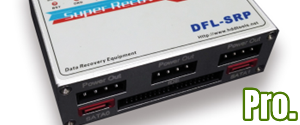
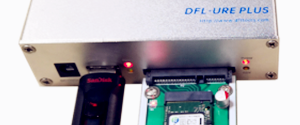
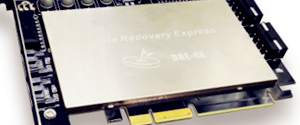

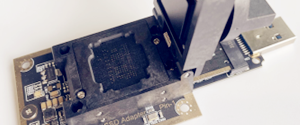
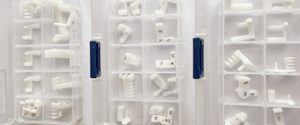
Comments are closed
Sorry, but you cannot leave a comment for this post.